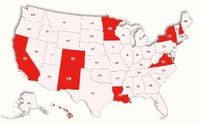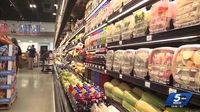As the calendar turns to November 1, 2025, millions of Americans are bracing for a crisis that will hit dinner tables across the country: the abrupt halt of Supplemental Nutrition Assistance Program (SNAP) benefits due to a protracted government shutdown. The ripple effects are already being felt from rural Oklahoma to urban Massachusetts, with food banks, state officials, and ordinary citizens scrambling to fill the widening gap left by the federal government’s inaction.
According to the U.S. Department of Agriculture (USDA), nearly 42 million Americans rely on SNAP to put food on the table. That’s more than 62 percent living in households with children, 37 percent including older adults or people with disabilities, and over 38 percent part of working families, as reported by the Center on Budget and Policy Priorities. But with Congress deadlocked over government funding since October 1, the well has run dry. “At this time, there will be no benefits issued November 01,” a USDA notice bluntly declared, as cited by Newsweek.
The political blame game has been fierce. The Trump administration, as reported by NPR, has pointed fingers at Democrats for failing to fund the program, while the White House continues to argue that only Congress can restore SNAP payments. Meanwhile, the USDA has refused to use $5 billion in contingency funds, insisting it is currently illegal to tap those reserves without a regular appropriation.
The consequences are anything but abstract. In Massachusetts, where more than 1.1 million residents—about 16% of the population—depend on SNAP, the city of Methuen has announced eight drop-off locations for nonperishable food in anticipation of surging need. Local leaders are stepping up. Methuen Mayor D.J. Beauregard, Jr. told WCVB, “If our federal government can’t get their act together, we will do our part.” Over in Watertown, restaurant owner Max Ritcey has turned his establishment into a hub for donations and is quietly preparing free meals for SNAP recipients. “Food is something people shouldn’t go without,” Ritcey said. “If I have the resources, I might not have the monetary at this point, but we have a community rallying around us that really wants to help.”
Governor Maura Healey of Massachusetts, pressed on whether the state would temporarily cover the federal shortfall, was direct: “There is no way that a state, any state in the country, can begin to backfill. Nor should they have to when there is a contingency fund that was set up precisely for this moment that the President of the United States just needs to press go on.”
Oklahoma faces its own daunting challenge. Chris Bernard, CEO of Hunger Free Oklahoma, highlighted the economic devastation: “Over $120 million will be removed from local economies and the food safety net, which constitutes more than 70% of the food safety net in Oklahoma.” He underscored the irreplaceable role of SNAP in rural areas, telling KOCO News, “There’s no way charity can fill that gap. It’s just not possible. It’s more than an annual budget for either of our food banks.” Bernard also urged those able to help to buy groceries for neighbors in need, especially in small towns where SNAP makes up a huge share of local grocers’ revenue. He noted that school meal programs remain a lifeline for children, even as families grow anxious about how to feed their kids.
The anxiety is palpable in Kansas as well, where 188,000 people depend on SNAP. Food banks in and around Wichita are already seeing a surge. Linda Hooten, a volunteer at Simple House Food Pantry, described the new faces arriving: “I’ve had people say, ‘I’ve never had to do this before.’ And never having had to do it, I can imagine how I’d feel.” On a typical Monday, the pantry serves about 18 families. This week? Thirty families showed up, a record for the small operation. Jami Scott, social services director at the Salvation Army of South Central Kansas, observed, “People are nervous. They’re worried about how they’re going to feed their families and pay their bills all at the same time.” With Thanksgiving looming, the pressure on food assistance programs is only intensifying.
Across the nation, a patchwork of state responses has emerged. Some governors are digging into state coffers to soften the blow. Virginia’s Governor Glenn Youngkin declared a state of emergency and pledged to continue SNAP benefits for over 850,000 Virginians, blaming the “Democrat Shutdown” for the crisis. “I refuse to let hungry Virginians be used as ‘leverage’ by Congressional Democrats,” Youngkin said in an October 23 press release. Louisiana’s Governor Jeff Landry, after declaring a state of emergency, has secured funding to pay SNAP benefits through November 4, but warned that the state cannot shoulder the burden indefinitely. “I urge those who are able bodied to continue to strive to get off SNAP and similar programs. Due to the Democrat’s political games these programs are not reliable,” Landry said, emphasizing job opportunities as an alternative.
Other states are focusing on shoring up food banks. California Governor Gavin Newsom has fast-tracked $80 million for food banks and may deploy the National Guard to help distribute food. Colorado is poised to allocate $10 million from its general fund, with similar moves underway in Minnesota and New Mexico. In New York, Governor Kathy Hochul announced $30 million to support over 16 million meals, stating, “I am doing everything in my power to soften the blow of the destruction Republicans in Washington are inflicting on our state.” Yet, the USDA has made clear it will not reimburse states for using their own money to maintain SNAP benefits during the shutdown, putting additional strain on already-stretched state budgets.
Amid the political crossfire, the reality for SNAP recipients is grim. Many are left with hard choices—whether to pay rent or buy groceries, whether to seek help from food pantries for the first time, or to rely on the kindness of neighbors and local businesses. For food banks and pantries, the question is how long their limited resources will last. “I wish we could do more, but again, there is a limit,” said Hooten in Wichita. “So we’ll do with what we have for as long as we can.”
With the government shutdown showing no sign of resolution, the fate of SNAP—and the millions who depend on it—hangs in the balance. As families, communities, and states step up in the absence of federal action, the nation is left to ponder: how long can the patchwork hold?


